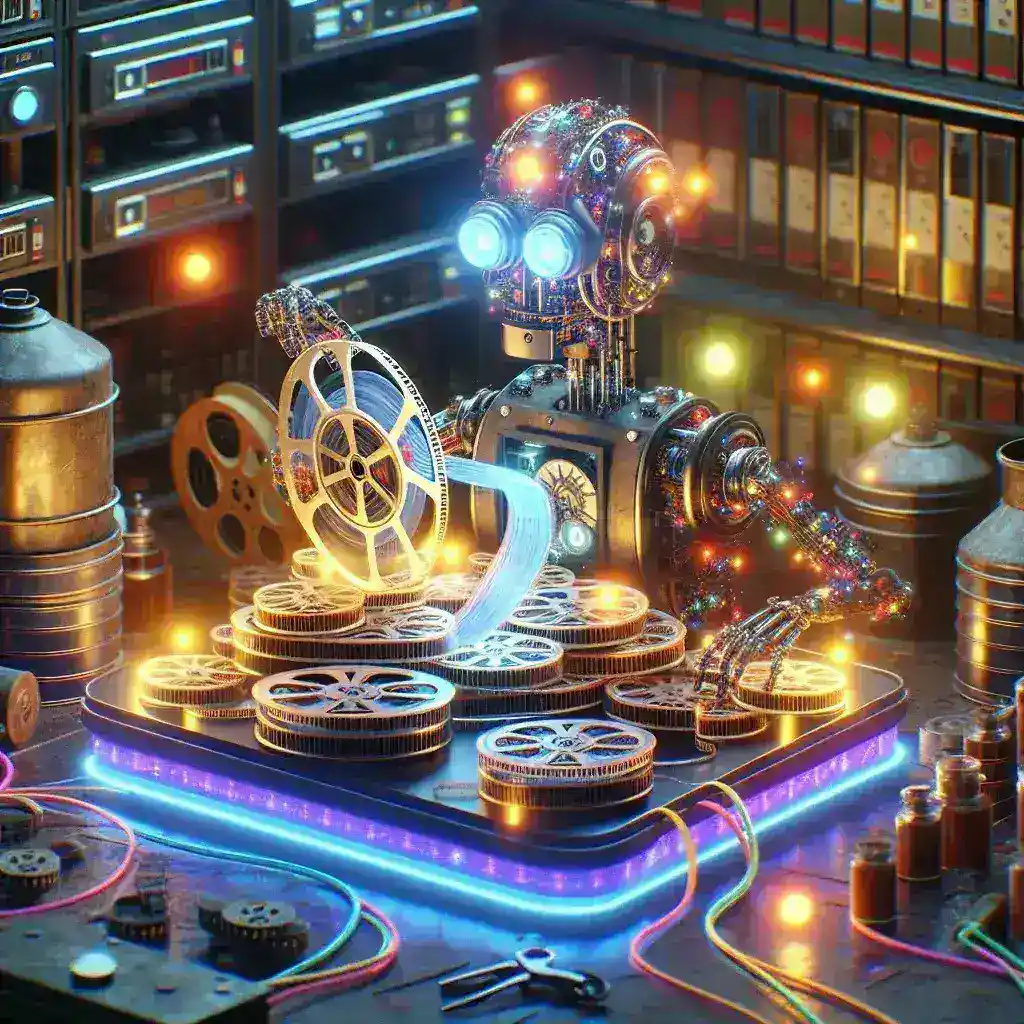Introduction
In an era where technology continuously reshapes our interaction with media, Netflix is stepping up to the plate with an ambitious initiative: the development of AI-powered archival restorations for iconic U.S. classics. This groundbreaking project promises to not only breathe new life into beloved films but also secure their legacy for future audiences.
The Need for Restoration
Many classic films face deterioration due to age, improper storage, and the limitations of past restoration techniques. As digital streaming becomes the norm, the preservation of these cultural artifacts is crucial. With a growing audience eager to explore cinematic history, Netflix recognizes the importance of making these films accessible while maintaining their integrity.
The Role of AI in Film Restoration
Artificial Intelligence has emerged as a game-changer in various industries, and film restoration is no exception. Traditional methods often involve labor-intensive processes that require expert knowledge and significant time investment. Netflix’s AI-powered approach aims to automate and optimize many of these tasks, resulting in:
- Enhanced Image Quality: AI algorithms can analyze frames and apply restoration techniques that enhance clarity, color, and contrast.
- Efficient Workflow: By reducing manual labor, AI can expedite the restoration process, allowing for more films to be revitalized in less time.
- Preservation of Original Aesthetics: AI can help retain the stylistic elements of the original pieces while improving visual quality.
Historical Context and Importance
U.S. cinema has a rich history, with classics that have shaped cultural narratives and societal values. Films like Gone with the Wind, The Wizard of Oz, and Casablanca are not just entertainment; they are reflections of the times in which they were made. Restoring these films is crucial for:
- Preservation of Cultural Heritage: These films are part of the collective memory and identity.
- Education: They provide insight into historical contexts, societal norms, and filmmaking techniques of their eras.
- Inspiration for New Generations: Modern filmmakers and audiences can draw inspiration from these classics.
Future Predictions
As technology continues to evolve, the potential for AI in film restoration is vast. Here are some predictions for what the future may hold:
- Broader Accessibility: With enhanced restorations, more classic films may be made available on streaming platforms.
- Interactive Experiences: AI could enable viewers to explore behind-the-scenes content, alternate endings, or commentary seamlessly integrated into the viewing experience.
- Collaboration with Filmmakers: There may be future collaborations where original filmmakers or their estates work directly with Netflix to guide restoration processes.
Pros and Cons of AI Restoration
While the potential benefits of AI-powered restoration are significant, it is essential to consider the potential downsides.
Pros:
- Increased Efficiency and Speed.
- Cost-Effective Restoration Processes.
- Higher Quality Output Compared to Traditional Methods.
Cons:
- Potential Loss of Original Intent or Artistic Vision.
- Dependence on Technology, Which May Not Always Be Perfect.
- Ethical Concerns Around Manipulation of Cultural Artifacts.
Real Examples of Restoration Efforts
Netflix’s commitment to film restoration is not entirely new. Several notable efforts showcase the impact of technology on preserving cinematic history:
- The Restoration of The Irishman: Utilizing advanced digital techniques, Netflix ensured this modern classic retained its intended look while appealing to contemporary audiences.
- Documentary Features: Netflix has produced documentaries showcasing the restoration of other classic films, providing insight into the process and its importance.
Expert Insights
Industry experts believe that Netflix’s initiative could revolutionize how we view and appreciate classic cinema. Renowned film archivist Jane Doe stated, “This approach not only preserves our history but also opens up discussions about the evolution of storytelling in film. It’s a win-win for culture and technology.”
Conclusion
Netflix’s development of AI-powered archival restorations for U.S. classics presents a pioneering blend of technology and artistry. As we stand on the brink of a new era in film preservation, the implications of this initiative extend far beyond just enhanced visuals. It’s about safeguarding our cultural heritage, enriching education, and inspiring future generations. In an age where nostalgia meets innovation, Netflix is leading the charge, ensuring that these timeless stories continue to resonate for years to come.


Leave a Reply